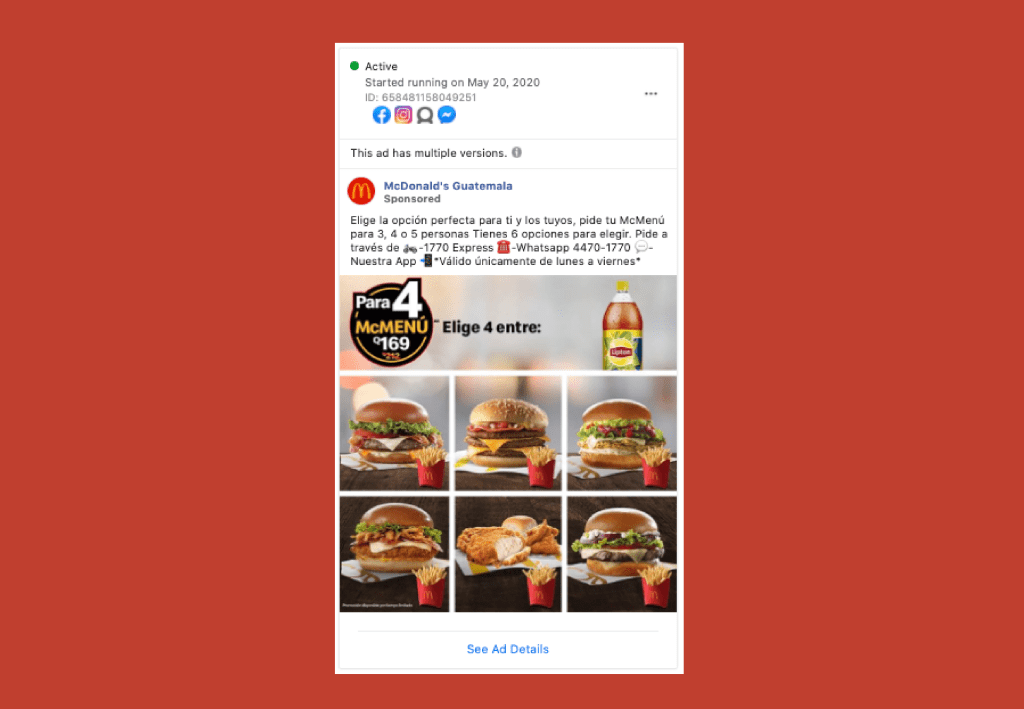Written by Daniela Furtado
There is no better way to learn than to study the masters of cross-cultural marketing.
As a multi-cultural agency, some of our favourite and most loyal clients are international ones. We enjoy the process of working with local partners and learning about cultural nuances in cross-cultural marketing.
Here is everything we have learned about cross-cultural marketing from our first-hand experience, studying industry examples, and through academic studies.
Learn more about what cross-cultural marketing is from this blog post.
5 Cross-Cultural Marketing Examples We Love
In the 1970s, social psychologist Geert Hofstede created a cross-cultural framework. It’s best known today as Hofstede’s Cultural Dimensions.
It’s a set of dimensions that describe the key values of a culture and how those values are related to people’s behaviour within the culture.
There are 5 primary dimensions, and each one represents preferences (or values) that distinguish countries from each other.
The dimensions are:
- Power Distance
- Individualism versus Collectivism
- Masculinity versus Femininity
- Uncertainty Avoidance
- Long-Term versus Short-Term Orientation
With a deep understanding of each dimension and some creative thinking, we can use Hofstede’s Cultural Dimensions in marketing.
Below we use examples to study the effectiveness of cross-cultural marketing campaigns with Hofstede’s Cultural Dimensions.
For more information about Hofstede’s Cultural Dimensions and how to use it in marketing, check out our blog post: What is Cross-Cultural Marketing?
Minimizing Power Distance in New Zealand
Power distance represents how power is distributed and how inequalities are handled in society.
Societies with a high power distance have a hierarchy in which everyone has a place in society, for instance Malaysia.
Societies with a low power distance, on the other hand, actively work towards equalizing the distribution of power. New Zealand, for example, has the lowest power distance.
Cross-Cultural Marketing Examples — Tourism New Zealand
An excellent marketing example of Hofstede’s Cultural Dimension put to work is Tourism New Zealand. When it comes to marketing campaigns, they are known for coming out with bangers.
Their most recent campaign, 100% Pure Welcome – 100% Pure New Zealand, is a compilation of 300 New Zealanders giving a sunrise welcome.
The campaign includes New Zealanders of all ages, genders, and ethnicities.
As a low power distance culture, they value equality and democracy. They are not easily impressed by status, titles, and fancy names. Which is why this video worked fantastically. Using a variety of voices, especially “ordinary” people, was key to their success.
Balancing Individualism versus Collectivism in the USA and Guatemala
To whom does your life belong?
How you answer this question will say a lot about your society. Is it individualistic or collectivist?
Societies with high individualism are loosely-knit, like the USA. The individual is the sole proprietor of their life and is expected to be responsible for themselves and their immediate families.
Collectivism, on the other hand, represents societies that are closely-knit and members of the society belong to their communities much more than they belong to themselves. For instance, Guatemala.
Cross-Cultural Marketing Examples — McDonald’s
McDonald’s could make up a textbook full of cross-cultural marketing examples.
Let’s study the differences between Facebook advertisements from McDonald’s USA and McDonald’s Guatemala.

McDonald’s Guatemala is currently promoting meal plans for 4 people or more and their Happy Meal, or Cajita Feliz.
This is a young child’s product yet the minimum age to create a Facebook account is 13 years old which tells me that this advertisement is probably targeted to parents.
McDonald’s understands that adults in Guatemala, a collectivist society, are more likely to treat the children in their family to a fast food meal than themselves.

In the USA, on the other hand, McDonald’s is promoting a Buy One Get One meal and rewards for downloading their app.
As an individualist society, this promotion plays into their need for individual benefits and rewards.
Nurturing Femininity in Scandinavia
According to Hofstede’s Cultural Dimensions, this dimension gives us insight into gender roles at home. Who makes purchasing decisions? How do people interact with the internet?
At large, highly masculine societies like Japan are highly competitive and uphold high standards. They value achievements and material rewards.
In highly feminine societies, people generally actively work to reach a consensus and lead a life of quality and nurturing. Sweden and other Scandinavian countries are highly feminine.
Cross-Cultural Marketing Example — Elkjøp
Elkjøp, the Norwegian electronics retail company, excellently markets its products to highly feminine societies like Sweden, Denmark and, of course, Norway.
In their 2016 holiday campaign, The Teen, we see first-hand how a highly feminine society approaches internet marketing and advertising.
In the video, a father gifts his transgender daughter an electronic hair curler. This demonstrates the neutrality of genders and the blur between gender roles.

What is also worth noting is how Elkjøp uses social media. Members of highly feminine societies, look to social media to build a rapport with the brand. For their holiday campaign video, Elkjøp left a personalized and thoughtful response to each comment.
The company simultaneously ran numerous corporate social responsibilities.
Again, as a highly feminine culture, the way they use social media as a brand demonstrates their dedication to nurturing relationships with their clients.
Embracing Uncertainty Avoidance in Greece
Countries with high uncertainty avoidance, like Greece, feel uncomfortable with ambiguity and they see uncertainty as a danger. They desire to have rules and formalities.
On the other side of the spectrum are countries with low uncertainty avoidance like Singapore.
They understand that the future can never be known. Members of low uncertainty avoidance societies seek innovation and challenges.
Cross-Cultural Marketing Examples — NOYNOY
One of the neatest cross-cultural marketing examples I’ve seen is from an advertising agency that understood and leveraged Hofstede’s Cultural Dimensions for their client was ADMINE.
For those who grew up in Greece, NOYNOY evaporated milk is probably their childhood favourite. However, due to dietary changes, sales were declining. ADMINE crafted a campaign for NOYNOY to convey the message “what is worthy, stands the test of time”.
Being a high uncertainty avoidance culture, ADMINE knew that the best way to rekindle the Greek’s interest in NOYNOY was to remind them of its legacy, tradition, and the role it played in their childhood.
Since they see change as risky and dangerous, they tend to be very loyal customers. When marketing, aim to reduce any perceived risk.
Highlighting Long Term Orientation in Nigeria
This dimension represents a society’s relationships to its own past, present, and future.
It is used to understand a culture’s priorities and motivations when making investments and large purchases.
Cultures that score high are long-term oriented. This means that they celebrate pragmatic values oriented to future rewards. Egypt and Nigeria are examples.
Short-term oriented cultures are ones that score low and encourage virtues related to the past and the present. Such as Japan and Germany.
Cross-Cultural Marketing Examples — AXA
An example of a company that leveraged the orientation of a culture for its advertising campaign was AXA Nigeria.

AXA uses history and storytelling to make Nigerians see the big picture of their services in print advertising.
As a long-term oriented culture, AXA tied the connection between the country’s founding fathers and the future of the country by highlighting the “enduring value” of their insurance plans.
They emphasized the future rewards and benefits of their benefits. This works great for long-term oriented cultures. Since they understand that traditions and habits can change, they want to equip themselves with the best resources to adapt.
As AXA explains, their insurance plans help Nigerians “remain influential in the lives of their families and loved ones while they are here and even more when they are gone. On Independence Day, we made that connection. We made them see the bigger picture.”
Always Work with Local Partners
Although the marketing world changes and evolves, one principle has always stayed the same – know your audience and know how to speak to them. This is what each company aimed to do through all the cross-cultural marketing examples listed above.
Understanding your audience’s cultural identity is one way to do so.
Collaborating with local marketing and advertising talent can help you understand the nuances of a culture that you may never be able to grasp on your own, and it can help you to personalize your campaign to the local audience to make it successful.
Besides working with locals, it is also valuable for us to do our part and do what we can to understand the local culture.
Daniela Furtado
Daniela Furtado is a consultant, writer and speaker on how to make businesses easy to find online. She is the founder and CEO of Findable Digital Marketing. Off the clock, she enjoys cooking, dancing, and drawing. She is based in Toronto, Canada.
 What is Cross-Cultural Marketing?
What is Cross-Cultural Marketing?

